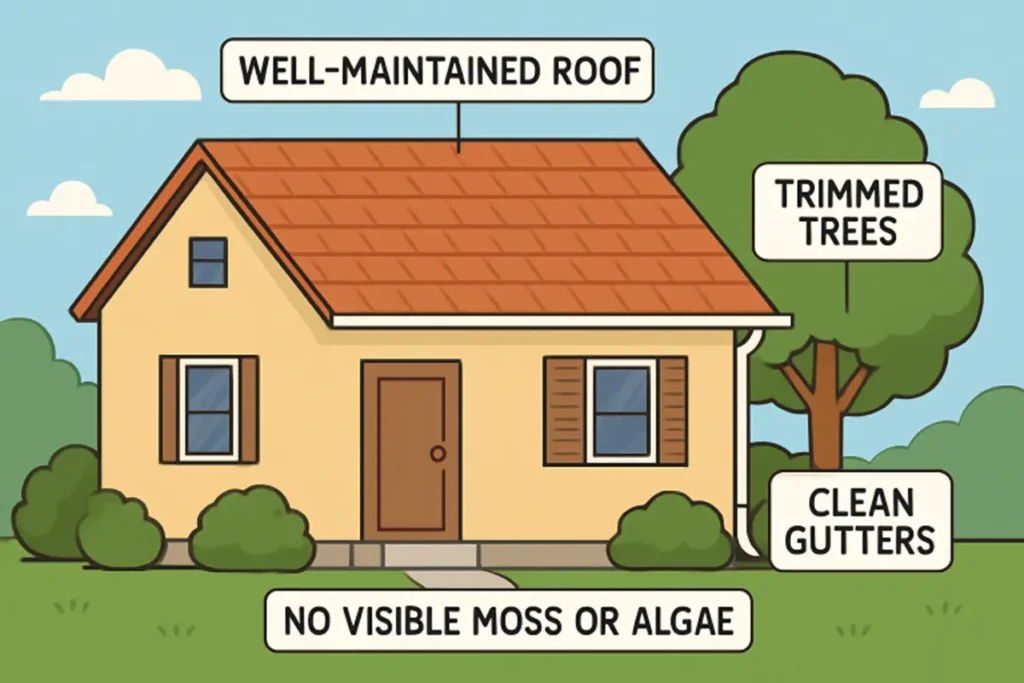Table of Contents
- Introduction
- Schedule Regular Inspections
- Clean Gutters and Downspouts
- Remove Moss and Algae
- Trim Overhanging Branches
- Ensure Proper Ventilation and Insulation
- Address Minor Repairs Promptly
- Choose Appropriate Roofing Materials
- Keep Detailed Maintenance Records
Introduction
Maintaining your roof goes far beyond curb appeal—it’s a protective investment for your home’s structural integrity and value. Consistent attention to your roof can prevent minor problems from spiraling into major, costly repairs. In coastal areas or regions prone to storms, working with a trusted Mandeville Roofer can help ensure your roof stands the test of time, regardless of local climate conditions.
Routine roof upkeep safeguards your property against moisture intrusion, enhances energy efficiency, and supports healthy indoor air quality. These efforts minimize the risk of leaks, mold, and heat loss while helping your roof reach—and often exceed—its expected lifespan.
Schedule Regular Inspections
A professional roof inspection is much like getting an annual physical—it’s your best line of defense against hidden roof damage. Even if your roof looks intact, weakened flashing, cracked sealant, or early shingle curling may go undetected without a trained eye. Experts recommend at least one thorough annual inspection, especially after severe weather, to catch potential problems before they worsen. During inspections, contractors check vulnerable areas like chimneys, valleys, skylights, and roof penetrations.
Clean Gutters and Downspouts
Gutters play a critical, though often overlooked, role in roof longevity. When they’re clogged with leaves, twigs, or silt, rainwater can back up under your shingles or along the fascia, leading to wood rot, leaks, and ice dam formation in winter. Cleaning gutters and ensuring downspouts flow freely is vital at least twice annually—especially after leaf fall in autumn and pollen or seed drop in the spring. This simple maintenance task wards off potential damage caused by standing water and ensures excess runoff is channeled away from your foundation.
Remove Moss and Algae
Moss and algae thrive in humid, shaded roof areas and may look harmless, but both can cause underlying moisture retention and premature shingle breakdown. Moss acts like a sponge, holding water against the substrate, while algae feed on the limestone in asphalt shingles. Removing these growths promptly helps prevent further degradation. Instead of harsh scraping or power washing, which can damage shingles, opt for gentle chemical treatments or professional cleaning. This not only preserves the life of your roofing material but also discourages regrowth by shifting environmental conditions around your roof.
Trim Overhanging Branches
Branches over your roof shade moss and algae while also dropping leaves that clog gutters. These branches pose real hazards in windstorms and can break, leading to punctures or other roof damage. Keeping trees and branches trimmed back at least 6 to 10 feet from your roof helps protect shingles, minimizes gutter debris, and limits animal access to your roof. Regular landscape maintenance is an easy but effective strategy for outdoor roof care.
For further guidance on extending your roof’s life in various climates—especially in storm-prone regions—resources from Consumer Reports offer insights on roofing materials and maintenance best practices.
Ensure Proper Ventilation and Insulation
The health of your roof is strongly tied to conditions in your attic. Heat and moisture can accumulate under your roof deck without adequate ventilation and insulation, leading to mold, rot, or even warped rafters. Over time, this unseen moisture can cause shingles to deteriorate faster and ice dams to form in winter. Ensure that vents are not blocked and that the insulation is sufficient to keep your attic temperature consistent with the outdoors. This preserves your roof and helps keep utility costs in check by supporting efficient heating and cooling.
Address Minor Repairs Promptly
Every loose shingle or cracked seal is a potential entry point for water and wind—and delaying repairs can lead to bigger, costlier fixes. Early attention to these issues can make all the difference between a quick patch and a complete roof replacement. Regularly walk your property and visually check your roof for any signs of missing, misaligned, or damaged shingles, along with rusted nails and deteriorated sealants. When minor damage is identified and fixed promptly, you help your roof reach its maximum lifespan.
Choose Appropriate Roofing Materials
Not all roofing materials are well-suited to every environment. For example, metal roofs withstand hurricane winds but may require extra insulation in colder settings. Clay and concrete tiles are highly durable in warm climates, but their weight isn’t always suitable for every structure. Matching your chosen roofing material to your local weather patterns and architectural needs is essential. Consult with your contractor about the pros and cons of asphalt shingles, metal, slate, tile, and synthetic roofing options to find the best fit for your area and budget. Trusted national publications like Better Homes & Gardens provide comprehensive guides on choosing materials.
Keep Detailed Maintenance Records
Maintenance records are invaluable for tracking your roof’s history, including inspections, repairs, material upgrades, and who performed the work. This documentation supports warranty claims (many manufacturers require proof of regular maintenance) and is a strong selling point when listing your home. A simple spreadsheet, file folder, or digital maintenance app ensures you stay organized and ready if you need to reference work completed or schedule future services.
By adopting a proactive approach to roof maintenance, you will protect your home and avoid unnecessary expenses and stress. Regular care preserves roof integrity, supports homeowner peace of mind, and can add to your property’s overall value and longevity.
Also read-Tech Console DefStartup: Empowering Gaming Innovation


